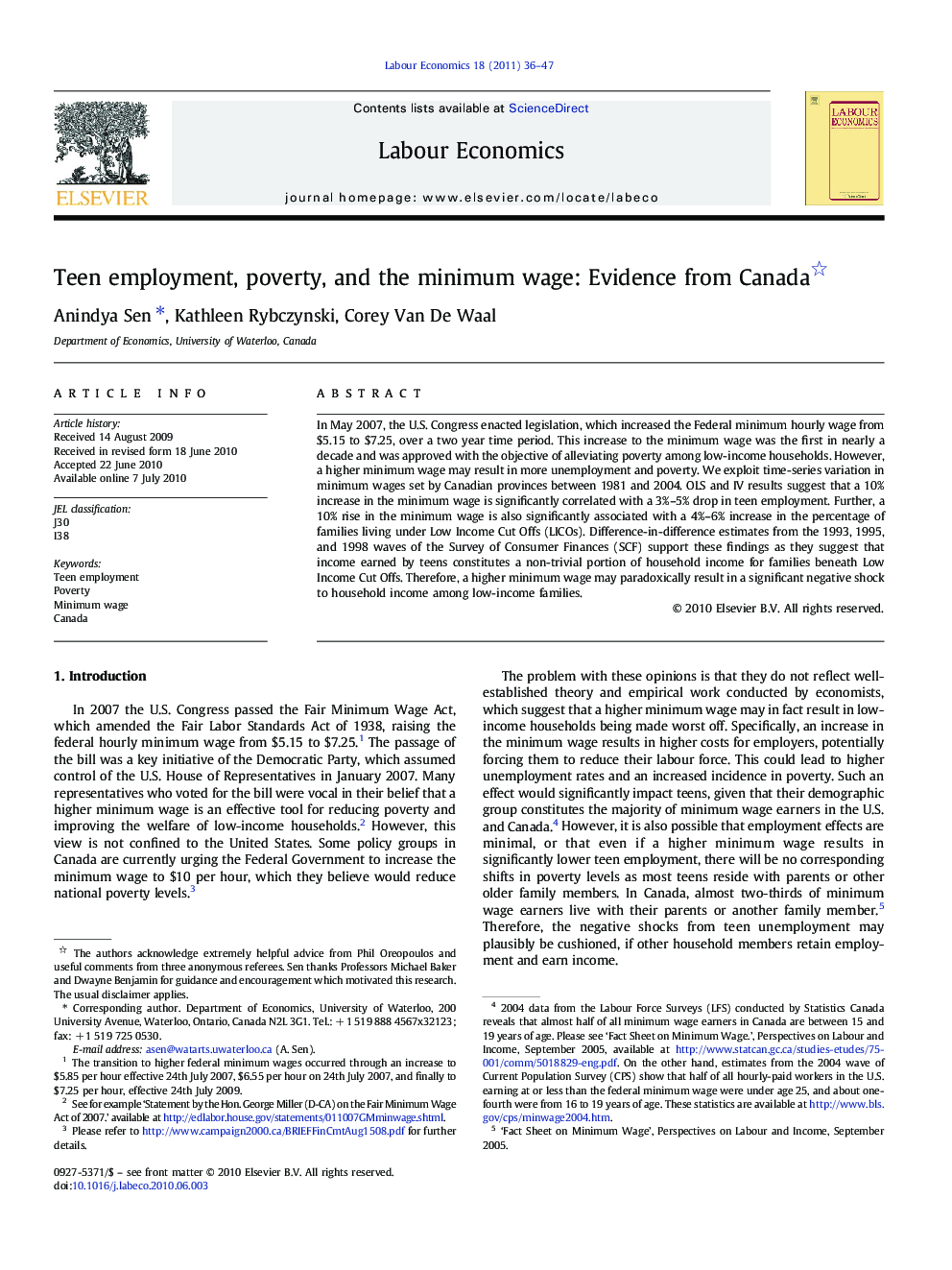| کد مقاله | کد نشریه | سال انتشار | مقاله انگلیسی | نسخه تمام متن |
|---|---|---|---|---|
| 971567 | 932363 | 2011 | 12 صفحه PDF | دانلود رایگان |

In May 2007, the U.S. Congress enacted legislation, which increased the Federal minimum hourly wage from $5.15 to $7.25, over a two year time period. This increase to the minimum wage was the first in nearly a decade and was approved with the objective of alleviating poverty among low-income households. However, a higher minimum wage may result in more unemployment and poverty. We exploit time-series variation in minimum wages set by Canadian provinces between 1981 and 2004. OLS and IV results suggest that a 10% increase in the minimum wage is significantly correlated with a 3%–5% drop in teen employment. Further, a 10% rise in the minimum wage is also significantly associated with a 4%–6% increase in the percentage of families living under Low Income Cut Offs (LICOs). Difference-in-difference estimates from the 1993, 1995, and 1998 waves of the Survey of Consumer Finances (SCF) support these findings as they suggest that income earned by teens constitutes a non-trivial portion of household income for families beneath Low Income Cut Offs. Therefore, a higher minimum wage may paradoxically result in a significant negative shock to household income among low-income families.
Journal: Labour Economics - Volume 18, Issue 1, January 2011, Pages 36–47